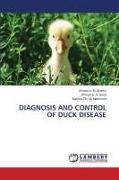Read more
Duck farming is a vital component of the agricultural economy, particularly in Asia, which accounts for 82.6% of global duck meat production. Ducks are highly adaptable to free-range systems and provide a significant source of high-quality protein through meat and eggs, especially in water-logged regions of developing countries. Despite their economic importance, duck populations are susceptible to various infectious diseases that can impact productivity and sustainability. Effective disease management involves clinical observation, post-mortem examinations, microbiological and serological testing, molecular techniques, biosecurity measures, vaccination protocols, and proper management practices are essential for disease prevention and control. The book highlights the diagnostic and control strategies for duck diseases, emphasizing the integration of traditional veterinary practices with modern technologies such as precision livestock farming (PLF), which utilizes environmental sensors, video surveillance, and wearable devices for early disease detection.
About the author
Dr. Ahmed Aly El-ShemyProfessor of Pathology and Clinical pathologyParasitology and Animal Diseases Department, Veterinary Research Institute, National Research Centre, Dokki, Tahrir Street, 12622 Giza, Egypt.

